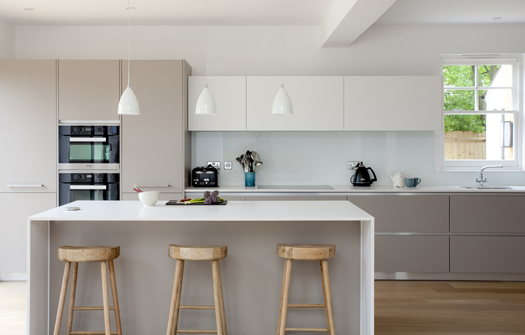
22 Sep WHICH STYLE OF KITCHEN WORKS FOR YOU?
Which Style Of Kitchen Works for You?
Kitchens are the “heart of the home”, a space that everyone in the family uses, a household necessity and where through the creation of delicious healthy food we nurture our body and minds. When people decide to create a new kitchen they can be daunted by the huge choice available along with deciding what will work within their homes.
Every home has its own distinct style, the key to good kitchen design is to blend it with the surroundings with strong visual links and incorporate your own personal style. If the kitchen is being extended or remodelled the new design and layout should also focus on functionality and lifestyle. Only then can an efficient and friendly space that reflects the needs of the whole family be achieved.

Kitchen Styles
The style of a kitchen will to a degree be dictated by the layout, this includes the overall size, walls, access routes and natural light. Kitchens are now multi-purpose rooms so consideration of lifestyle is vital, think of a kitchen as a space that needs to perform many tasks.
Consider the layout and space of the kitchen:
- Small spaces – avoid clutter and create storage
- Large spaces – create a sense of the generous space by leaving some areas free
- Open plan spaces – incorporate a bespoke statement island as the centrepiece
- Wall units – break up solid doors with glass fronted doors
- Dark spaces – choose reflective materials on either doors, walls or surfaces
- Light spaces – matt finishes work best in rooms with lots of natural daylight
- Lighting – allow for multiple lighting throughout the space from strong lighting in preparation areas to ambient lighting under units.
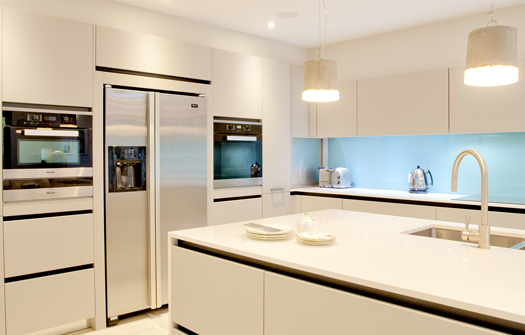
Then choose a kitchen style that works for your home.
Modern Kitchens
Simple and sleek are the design elements of a modern kitchen. The trend for plain and handleless doors continues in gloss monochrome finishes. Many appliances are often built in or designed in stainless steel. Splashbacks and tiling are used to bring in pops of colour.
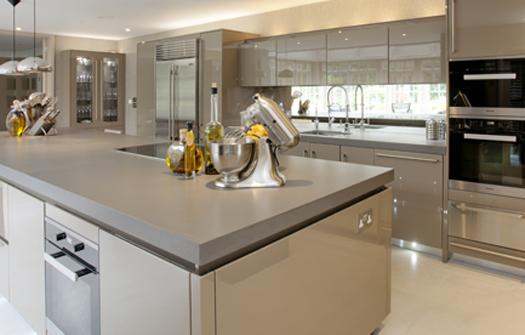
Industrial Style
Industrial style has evolved over time, characterised with tactile surfaces such as exposed brick or wood with a minimalist furniture style. Filament light bulbs and concrete colour tones are key elements of this design.
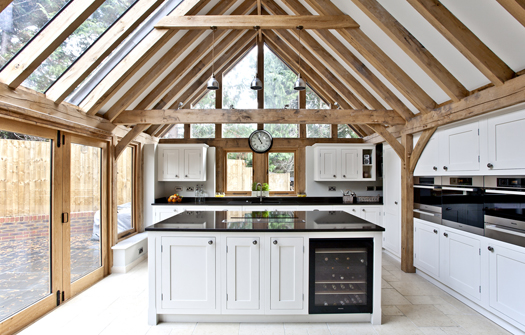
Traditional Kitchens
Think about the detail, raised or decorative door panels often made of wood with featured mouldings, cornices and handles. The colours are often in softer tones than modern kitchens with door furniture in natural wood or painted. Belfast or butler sinks are also a stylish addition to the traditional kitchen design. Range cookers are the appliance of choice to create the focal point of the traditional style.
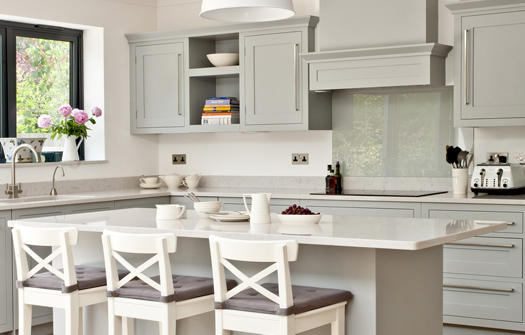
Classic Kitchens
Shaker kitchens epitomise the classic kitchen offering a calmer simplicity. The emphasis of this style is on form and function to create a timeless classic style that lasts a lifetime. Door furniture is typically classic proportioned doors with an inset panel painted in a matt neutral finish of white or cream. Worktops are either natural wood or in a subtle neutral tone.
Transitional Kitchens
As with many homes, kitchen design now integrates elements of both traditional and modern design styles. Creating a timeless and practical kitchen can be achieved by picking elements of both. Slimmer profiles are now available with shaker doors and slab drawers to give a classic style a modern edge. Painted doors with or without woodgrain can be seen in handless designs creating a softer texture in modern spaces.
Mix modern appliances placed behind traditional units, add wood effect doors to a modern kitchen to link to outside spaces, handless doors with wooden worktops or traditional units with streamlined quartz tops all provide the best of both worlds.
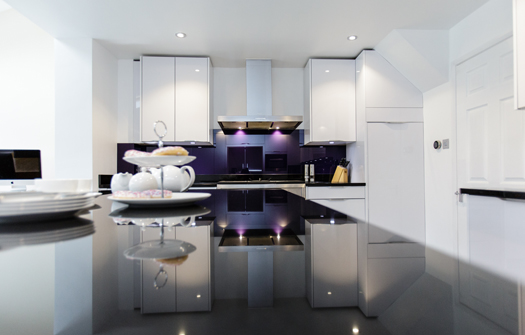
Worktops
Worktops are now available in a wide range of colours and textures, quartz has grown in popularity over recent years with durable composite surfaces offering a touch of grandeur to the design. A combination of styles is now becoming more popular with touches of wood included to add another element to the overall aesthetics. Clutter-free worktops are emerging in all kitchen designs to create an illusion of space as well as a creating calmer food preparation areas.

Colour Matters
Colour can have an effect on our emotions, so choose colours that fit with the environment you wish to create in your kitchen space.
Select three colours with a neutral tone being the most dominant for areas such as the kitchen walls and floors. Grey, black and white tones have risen in popularity for kitchen design, especially grey as it available in so many shades.
The second tone can be used on worktops and furniture. Two tone kitchens are now popular as they allow the room to look less structured, if the room has limited daylight it is best to place lighter toned furniture on the walls. Keeping to one worktop colour creates a harmonious link throughout a two tone design.
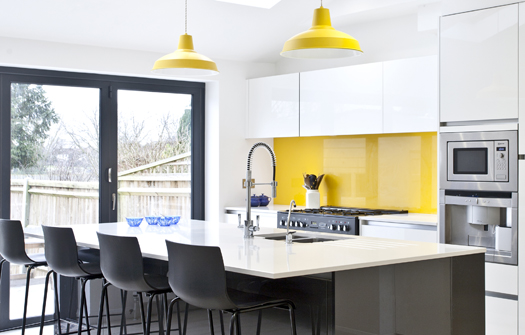
A third tone adds the finishing touches with dramatic pops of colour through tiles, splash-backs, lighting or accessories.
Whatever the kitchen style, a mix of several styles, textures and colours can be achieved to create a design that works for you and your home.
Contact Kate Diss at Sanctuary Kitchens and Bathrooms to create your kitchen style.


